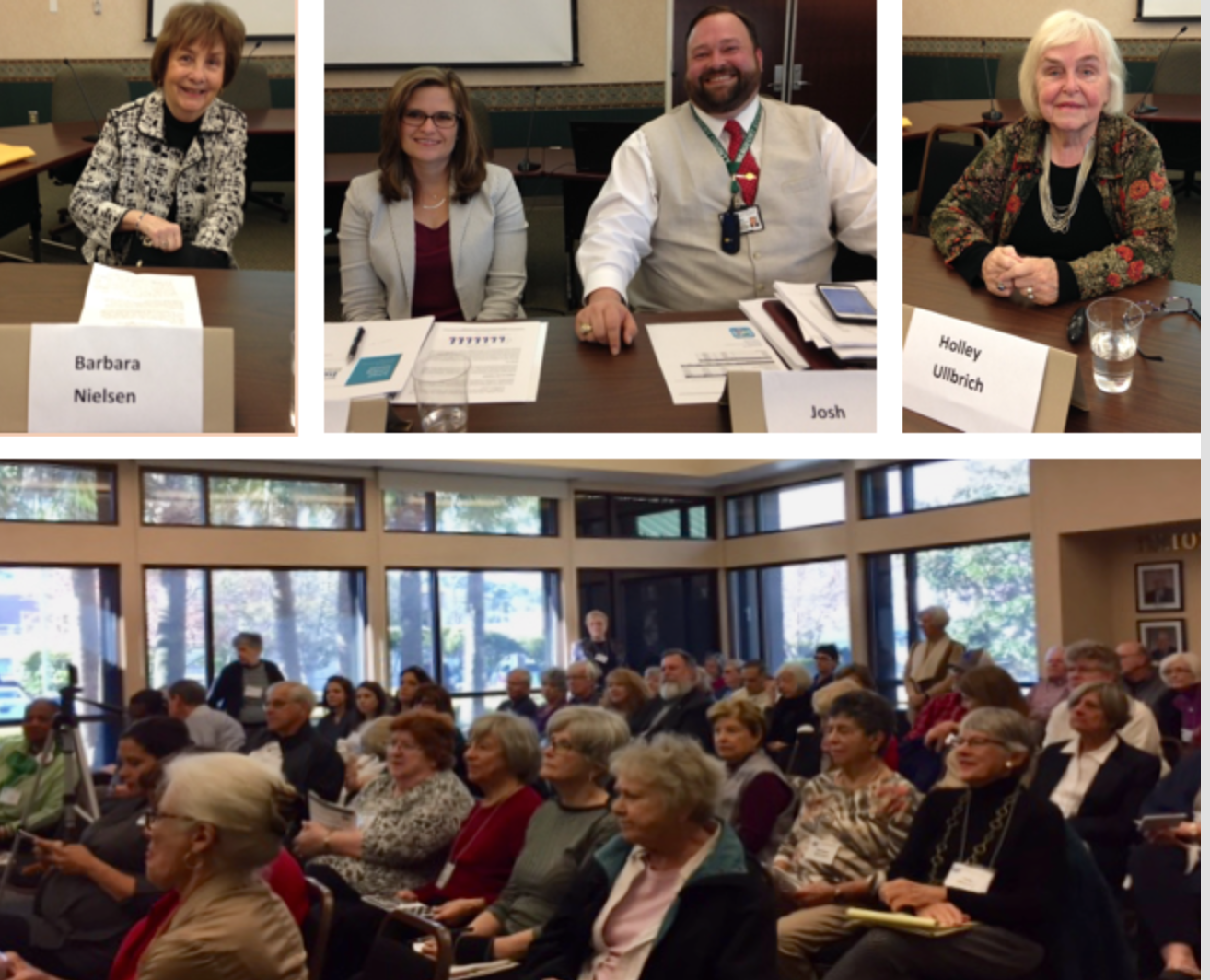
More than 60 members of the League and the general public turned out to hear about the basics of funding our schools on March 14, 2018.
A panel of three plus a moderator presented the topic. Moderator Dr. Barbara Nielsen, a League member and the SC Superintendent of Education from 1990 to 1998, introduced the panel members: Josh Gruber, Interim Administrator of Beaufort County; Tonya Crosby, Chief Financial Officer of the Beaufort County School District; and Dr. Holley Ulbrich, distinguished professor emerita of economics at Clemson University and current Co-President of the SC League of Women Voters.
Gruber started by reminding everyone that Beaufort County is one of the fastest growing areas in the state. Its population was about 120,00 in 2000 and is expected to be about 190,000 to 200,000 in 2020. Among those settling here are many retirees as well as many families with school-age children. Probably a large portion of the newcomers will settle in the Bluffton area, the fastest growing section of the county. It will gain an expected 40,000 to 80,000 homes in the next few years. Okatie will also quickly increase in population. Because of all this growth, many new schools will be needed. The big question is how they will be financed.
Crosby, who grew up in the local school district and has children in the public schools, stated that Beaufort County has the sixth largest school district in the state. In the district are 22,000 students, 1,700 teachers, and 3,000 other employees. The number of students increases by about 1 percent each year. About 60 percent of the students qualify for the free or reduced price lunch program.
In all, the per pupil school cost is $9,800 a year. Local taxes supply about two-thirds of the funding. One-third comes from the state, and a small percentage from the federal government.
SC Act 388, passed in 2006, eliminated property taxes for school operations on owner-occupied homes, and replaced that revenue with a property tax relief check from the state, funded by an increase in the sales tax. There are a number of problems in distributing state funds equitably associated with this property tax relief.
The challenge for school districts is to have enough money to meet growth needs, foster diversity, educate students with disabilities and those whose first language is not English, attract quality teachers, and meet unfunded mandates.
Ulbrich titled her part of the presentation “Education Funding: A Lawsuit and Two Catastrophes.” The lawsuit refers to the one the poorer school districts filed against the state to get a larger share of revenue for their areas. The first catastrophe was giving owner-occupied homes property tax relief (Act 388). The second catastrophe was the great recession. The resulting unemployment and slipping business income resulted in lower tax returns to the state. Ullbrich also commented that the state lottery does not supply extra income to the schools because its funds go for scholarships.
Ulbrich urged that to gain more funds for education, the state needs to overhaul the Education Finance Act. She discussed a variety of possible measures, including reducing the number of exemptions from the sales tax, transfer taxes, and taxes on internet sales. It is important to contact your local and state officials to ask them for EFA reform.
The question period brought up a variety of ideas. Among them were: give more control at the local level regarding how funds are spent, and have developers contribute more in impact fees to help finance the schools that will be needed by the new residents.
Miss the presentation? Watch it here! School Funding Part One, School Funding Part Two.